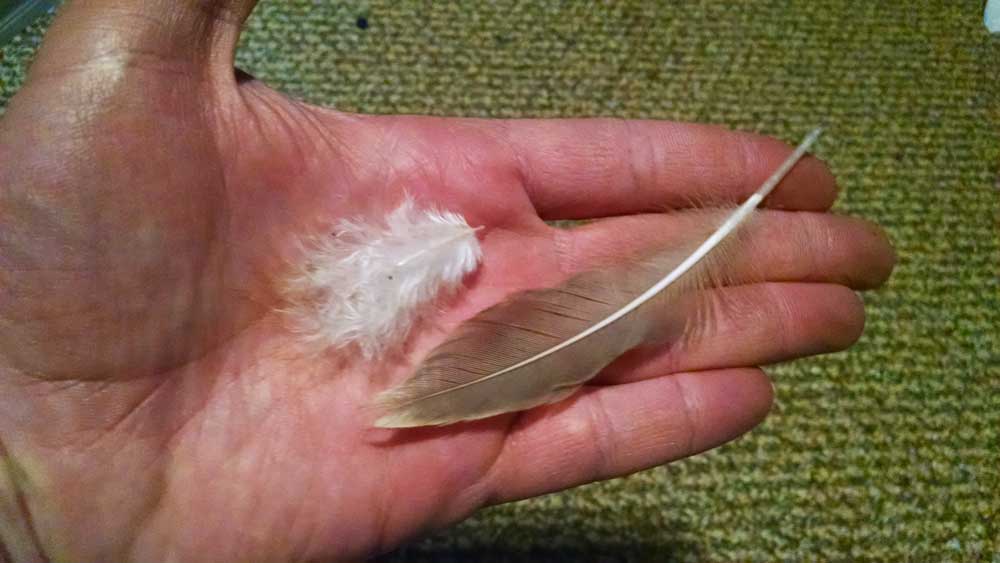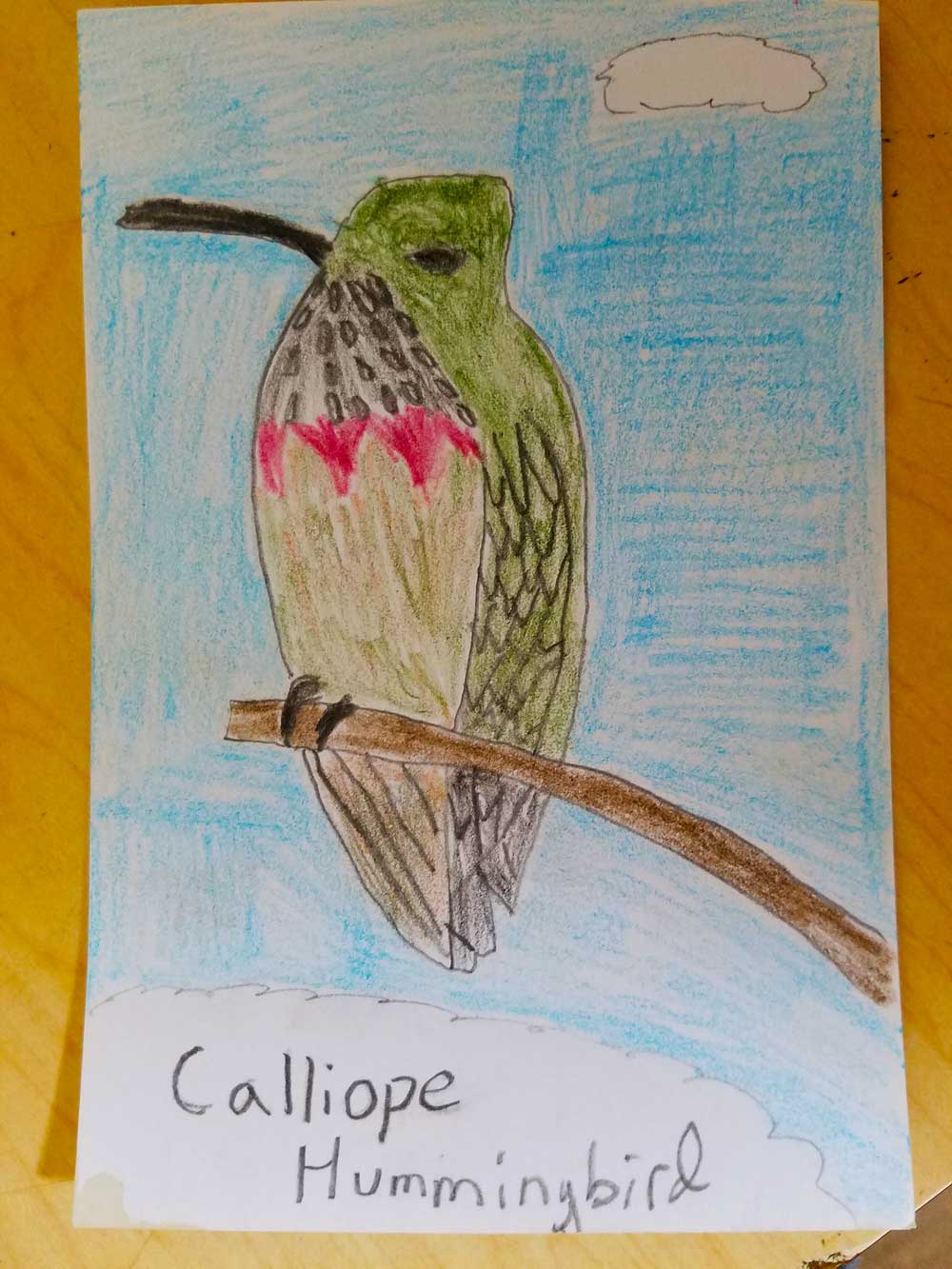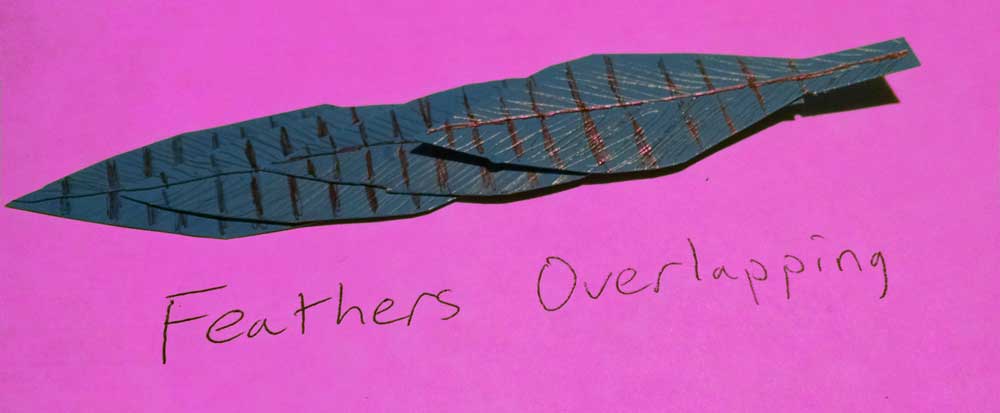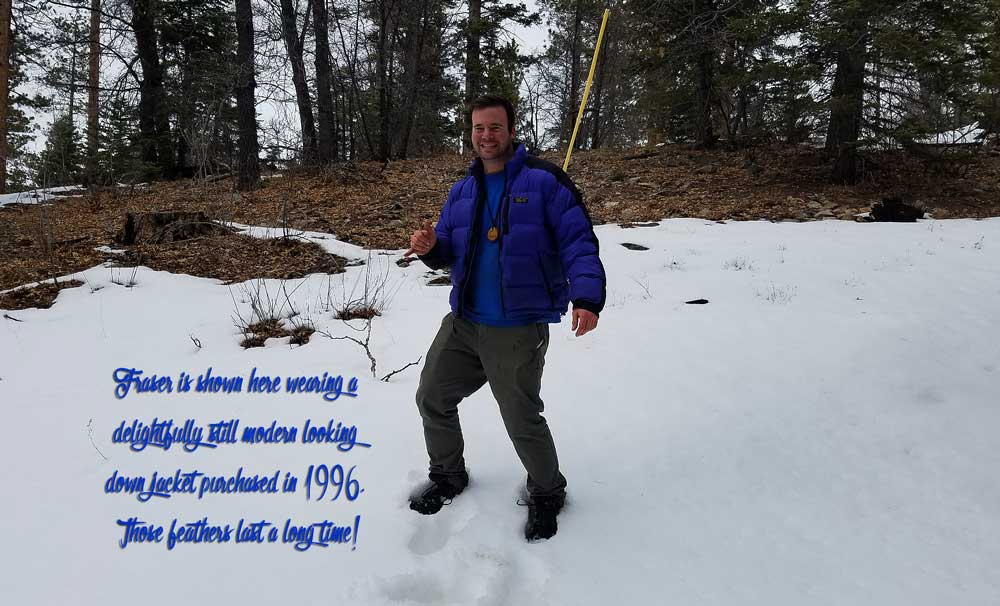It is the middle of Feathered Friends class. After discussing that there are multiple feathers on a bird consisting of contour and downy feathers, one of my students says: “Mr. Frazer, what is the difference between the contour feathers and the down feathers on a bird?”

My answer describes that contour feathers are the outermost layer of feathers on a bird and down feathers are beneath the contour feathers and keep the bird warm. Although my answer describes the basic functions of each feather, there is a plethora of material about this very subject.
Let’s start with the basics: what kind of material are bird feathers made from? Bird feathers are made from keratin, the same substance that is in the hair, nails, and teeth of humans. The basic structure of a feather is formed from rachis, barbs, and barbules. Rachis are the central stem, like the trunk of a tree. Barbs branch off from this central stem like branches. Barbules connect barbs, like how leaves connect to branches.

When discussing feathers, it is important to recognize that birds can utilize feathers for multiple functions. In addition, there are different types of feathers on a bird, each being useful. Two of the types of feathers found on a bird are contour and downy.
Contour feathers are the feathers that form the outermost layers on a bird. First, the most obvious function of these feathers is to improve a bird’s flight. The keratin found in various bird feathers are tough and flexible, providing a material that can help keep a bird in flight while being flexible for maneuverability. Contour “flight” feathers are made up of Remiges (wing feathers) and Rectrices (tail feathers). Remiges and Rectrices are more rigid than other contour feathers.

Second, contour feathers provide the color and design of the bird’s species. The contour feathers can help a bird stay camouflaged from predators or serve as a warning to other birds.
In addition to this function, contour feathers overlay one another and are somewhat waterproof like how shingles on a roof are layered. Interestingly, contour feathers are slightly different on each side of the feather. The side facing outwards is smooth, helping with aerodynamics and keeping water off the bird. The side of the feather facing inwards is slightly hooked allowing the underside of the feathers to attach to the smooth side of the feather underneath it.

The primary function of downy feathers on a bird is to form a layer of insulation to keep a bird warm. In between contour feathers is a patch of bare skin called the apteria. Down feathers grow in the apteria keeping air trapped beneath the contour wings. Downy feathers are formed of a somewhat loose structure that is flexible and helps trap air close to the bird. In addition to being flexible, downy feathers sit closest to the skin on a bird helping with insulation.

The difference between contour and down feathers is not simple; they both have amazing functions. A lesson on the two feathers allows us as educators to further share the wonder and fascination that nature provides.
Fun Fact: It is now commonly believed that dinosaurs from the Theropod group of dinosaurs had feathers. Furthermore, some scientists state that birds are direct descendants of the Theropod group of Dinosaurs.
At High Trails Outdoor Science School, we literally force our instructors to write about elementary outdoor education, teaching outside, learning outside, our dirty classroom (the forest…gosh), environmental science, outdoor science, and all other tree hugging student and kid loving things that keep us engaged, passionate, driven, loving our job, digging our life, and spreading the word to anyone whose attention we can hold for long enough to actually make it through reading this entire sentence. Whew…. www.dirtyclassroom.com






Comments are closed.